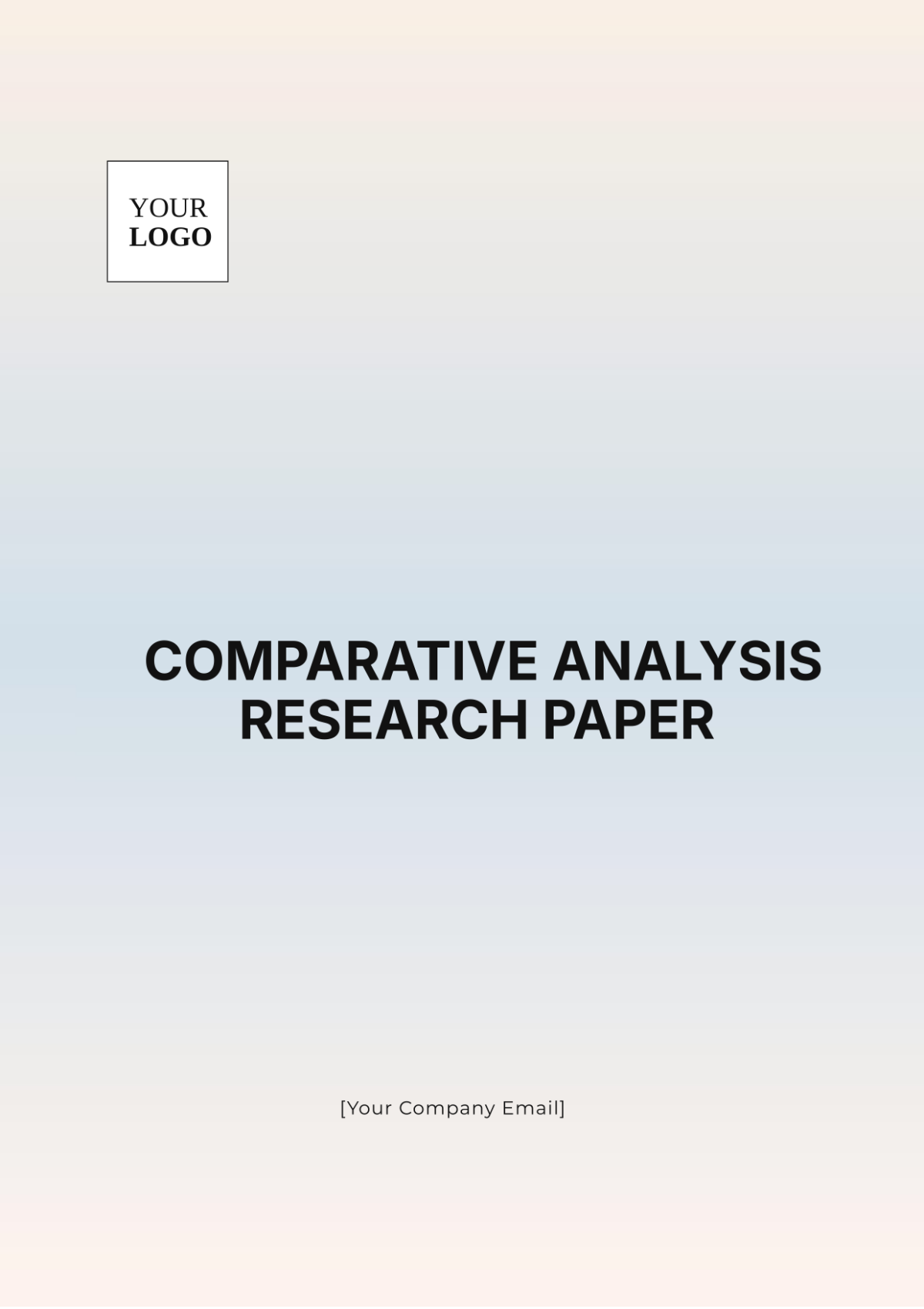Comparative Analysis Research Paper
I. Introduction
Comparative analysis is a research methodology that involves comparing two or more entities to evaluate their similarities and differences. This method is widely used across various disciplines, including social sciences, humanities, and natural sciences. This research paper aims to provide a comprehensive overview of comparative analysis, discussing its objectives, methods, and applications, while also providing a comparative analysis example for better understanding.
II. Objectives of Comparative Analysis
The primary objectives of comparative analysis are:
Identify similarities and differences between entities
Understand the relationship between variables
Generate insights for decision-making
Evaluate the effectiveness of policies or interventions
III. Methods of Comparative Analysis
There are several methods of conducting comparative analysis, including:
Qualitative Comparative Analysis (QCA): Focuses on the in-depth comparison of a few cases to derive patterns and principles.
Quantitative Comparative Analysis: Utilizes statistical techniques to compare numerical data across multiple cases.
Cross-National Comparison: Compares different countries to understand global trends and differences.
Longitudinal Comparison: This involves comparing the same entities over different time periods to observe changes and developments.
IV. Data Collection Techniques
Effective data collection is crucial for accurate comparative analysis. Common techniques include:
V. Applications of Comparative Analysis
Comparative analysis is applied in various fields, such as:
Education: Comparing educational systems, policies, and outcomes across different regions.
Healthcare: Evaluating healthcare systems, practices, and outcomes globally.
Economics: Analyzing economic policies, market structures, and performance indicators.
Political Science: Comparing governmental structures, public policies, and election outcomes.
Sociology: Studying social phenomena, cultural practices, and community dynamics.
VI. Example of Comparative Analysis
To illustrate the use of comparative analysis, we will compare the economic growth of two countries: Country A and Country B. The following table shows key economic indicators:
Indicator | Country A | Country B |
|---|
GDP Growth Rate | 3.5% | 2.8% |
Unemployment Rate | 4.2% | 5.1% |
Inflation Rate | 1.8% | 2.3% |
Foreign Direct Investment (FDI) | $15 billion | $10 billion |
The comparative analysis of these indicators reveals that Country A has a higher GDP growth rate and lower unemployment rate compared to Country B. However, Country B has a slightly higher inflation rate and lower FDI. These differences can be attributed to various factors, such as economic policies, market conditions, and external influences.
VII. Conclusion
Comparative analysis is a powerful research technique that helps in understanding the similarities and differences between entities. By utilizing effective data collection methods and applying appropriate analytical techniques, researchers can generate valuable insights for policy-making, problem-solving, and strategic planning. This research paper has provided an overview of comparative analysis, its methods, objectives, and applications, along with a practical example to illustrate its utility.
VIII. References
George, A. L., & Bennett, A. (2055). Case Studies and Theory Development in the Social Sciences. MIT Press.
Ragin, C. C. (2057). The Comparative Method: Moving Beyond Qualitative and Quantitative Strategies. University of California Press.
Collier, D. (2063). The Comparative Method. In Political Science: The State of the Discipline II (pp. 105–119),. American Political Science Association.
Mill, J. S. (2073). A System of Logic, Ratiocinative and Inductive. Longmans, Green, Reader, and Dyer.
Smelser, N. J. (2076). Comparative Methods in the Social Sciences. Prentice-Hall.
Research Templates @ Template.net






























